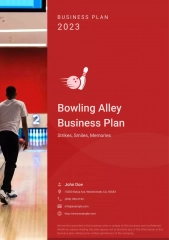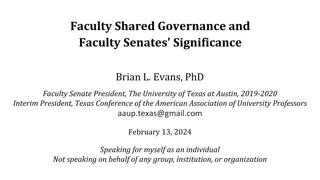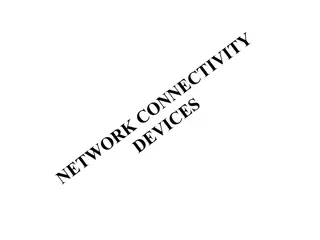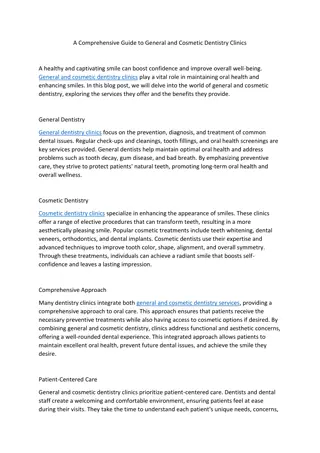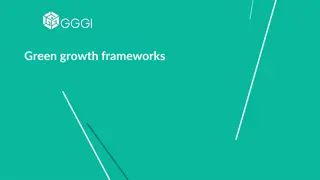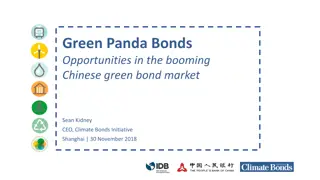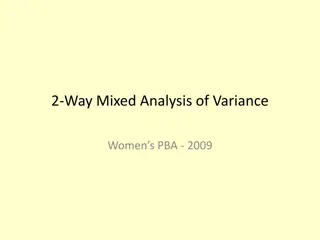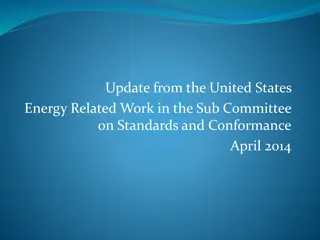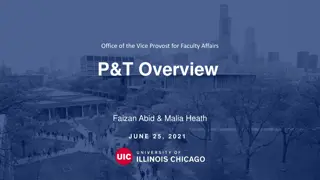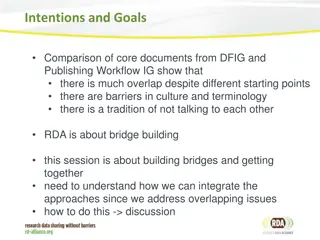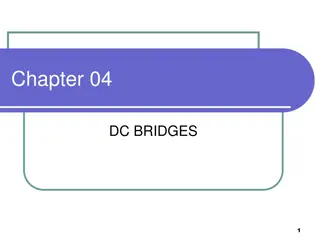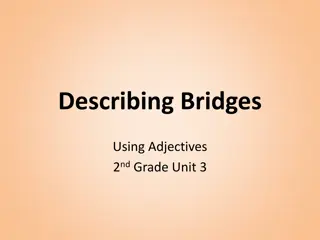Building Bridges: Enhancing Faculty Leadership at Bowling Green State University
Building Bridges at Bowling Green State University focuses on creating connections and advancing the careers of post-tenure women and underrepresented minority faculty members. The initiative aims to develop a supportive network of faculty leaders through various programs and activities, addressing challenges such as invisible service activities and the need for (re)negotiating identities. Sustainable solutions include inclusive leadership training, diversity/inclusion plans, and formal climate surveys. Metrics like the Turnover Quotient are used to measure progress and impact.
Download Presentation

Please find below an Image/Link to download the presentation.
The content on the website is provided AS IS for your information and personal use only. It may not be sold, licensed, or shared on other websites without obtaining consent from the author.If you encounter any issues during the download, it is possible that the publisher has removed the file from their server.
You are allowed to download the files provided on this website for personal or commercial use, subject to the condition that they are used lawfully. All files are the property of their respective owners.
The content on the website is provided AS IS for your information and personal use only. It may not be sold, licensed, or shared on other websites without obtaining consent from the author.
E N D
Presentation Transcript
Building Bridges: Creating Connections for the Next Generation of Faculty Leaders Dr. Julie Matuga Vice Provost for Institutional Effectiveness Co-Director Dr. Peg Yacobucci Professor of Geology Change Leader Dr. Lisa Hanasono Associate Professor of Communication Social Scientist Dr. Sheila Roberts Vice Provost of Academic Affairs Provost s Office Bowling Green State University
Building Bridges Develop a supportive network of current and future faculty leaders to: Advance the careers of post-tenure women and URM faculty 1. Create a cohort of institutional change agents. 2.
Overview Challenges Sustainable Solutions I. II. III. Looking Ahead
I. Challenges Secret Service = Service activities that remain largely invisible, unrewarded, and taken-for-granted by institutions and institutional members Relationally oriented, qualitatively rich, and collaborative Disproportionately affects women and faculty of color Hanasono, L. K., Broido, E. M., Yacobucci, M. M., Root, K. V., Pe a, S., & O Neil, D. A. (in press). Secret service: Revealing gender biases in the visibility and value of faculty service. Journal of Diversity in Higher Education.
I. Challenges (Re)Negotiating Identities Going to the Dark Side Need to build bridges between faculty and administrators Faculty Survey Results (N = 388) Identifying with administrators was predictive of faculty members intention to pursue a leadership position, Wald statistic = 6.93, = 1.55, p = .008.
II. Sustainable Solutions 2017-18: Institutional and Structural Change Inclusive Leadership Training January Retreat & Ongoing Training for Chairs and Directors Webinar and Book Discussions on Strategic Diversity Leadership for Chairs, Directors, and Deans Developing Clear and Measurable Diversity/Inclusion Plans for each Academic Unit Articulates measurable goals and benchmarks related to diversity and inclusion Launched a Formal Climate Survey for all BGSU Faculty MAC Academic Leadership Program
II.a. Sustainable Solutions: Metrics Turnover Quotient (TQ) TQ=[1 TQ=[1- -(end period URM (end period URM- -beginning period URM)/New URM Hires] *100 beginning period URM)/New URM Hires] *100 Moreno, J.F. et al. (2006). Moreno, J.F. et al. (2006). The Revolving Door for Underrepresented Minority Faculty: The Revolving Door for Underrepresented Minority Faculty: An Analysis from the Campus Diversity Initiative An Analysis from the Campus Diversity Initiative. Claremont, CA: The James Irvine Foundation Campus Diversity Project. Irvine Foundation Campus Diversity Project. . Claremont, CA: The James
II.a. Sustainable Solutions: Metrics Turnover Quotient: BGSU NSF Faculty (2015-2017) 0.60 0.40 0.20 0.00 Non-URM URM Total -0.20 -0.40 -0.60 -0.80 -1.00 Male Male Female Female All Faculty All Faculty
II.a. Sustainable Solutions: Metrics Turnover Quotient: BGSU NSF Faculty Administrators (FAD) and Faculty (2015-2017) 2.50 2.00 1.50 1.00 0.50 Male-NonURM Male-URM Female-NonURM Female-URM 0.00 -0.50 -1.00 -1.50 -2.00 -2.50 FAD FAD Faculty Faculty Total Total
II. Sustainable Solutions 2017-18: Interpersonal and Individual Change Leadership Breakfast for Women Faculty (n=48) Dr. Saundra Yancy MacGuire s Presentation on Self-Mentoring Building Networks: Mentoring Maps Exercise National Center for Faculty Development and Diversity (NCFDD) FDD Learning Community and Professional Development Workshops Sponsoring Women to Complete the Faculty Success Program Writing Circles and Research Support Groups NCFDD Webinar Screenings and Discussion Session with Univ. Toledo Beginning to Develop a University-wide Mentoring Program
III. Looking Ahead Analyze Data: Faculty Climate Survey and Metrics (Turnover Quotient) Identifying strengths and areas for improvement Work with administrators and leaders to use the survey results to take action Present and Publish Social Scientific Research on Faculty Leadership, Secret Service, and the Dark Side Continue to Pursue and Support Sustainable Solutions


